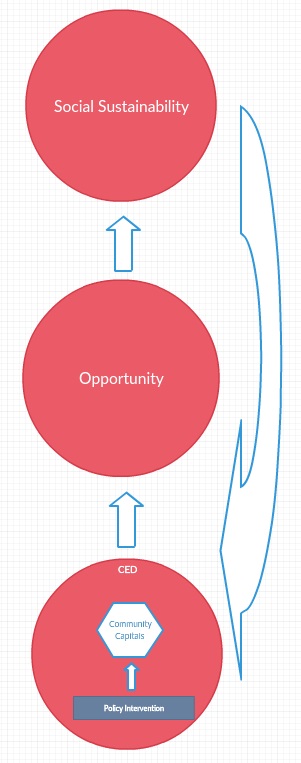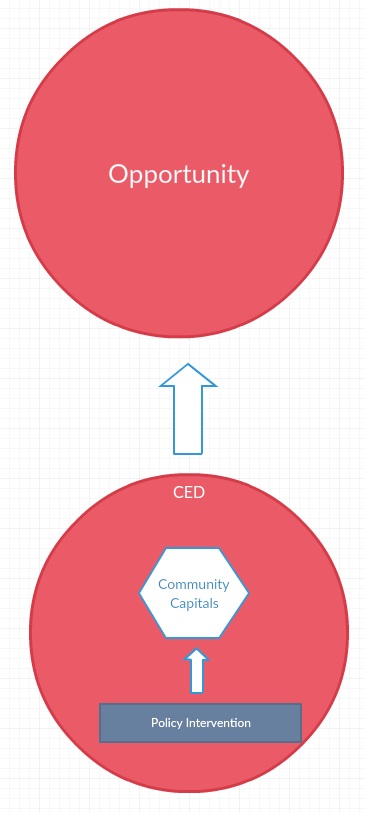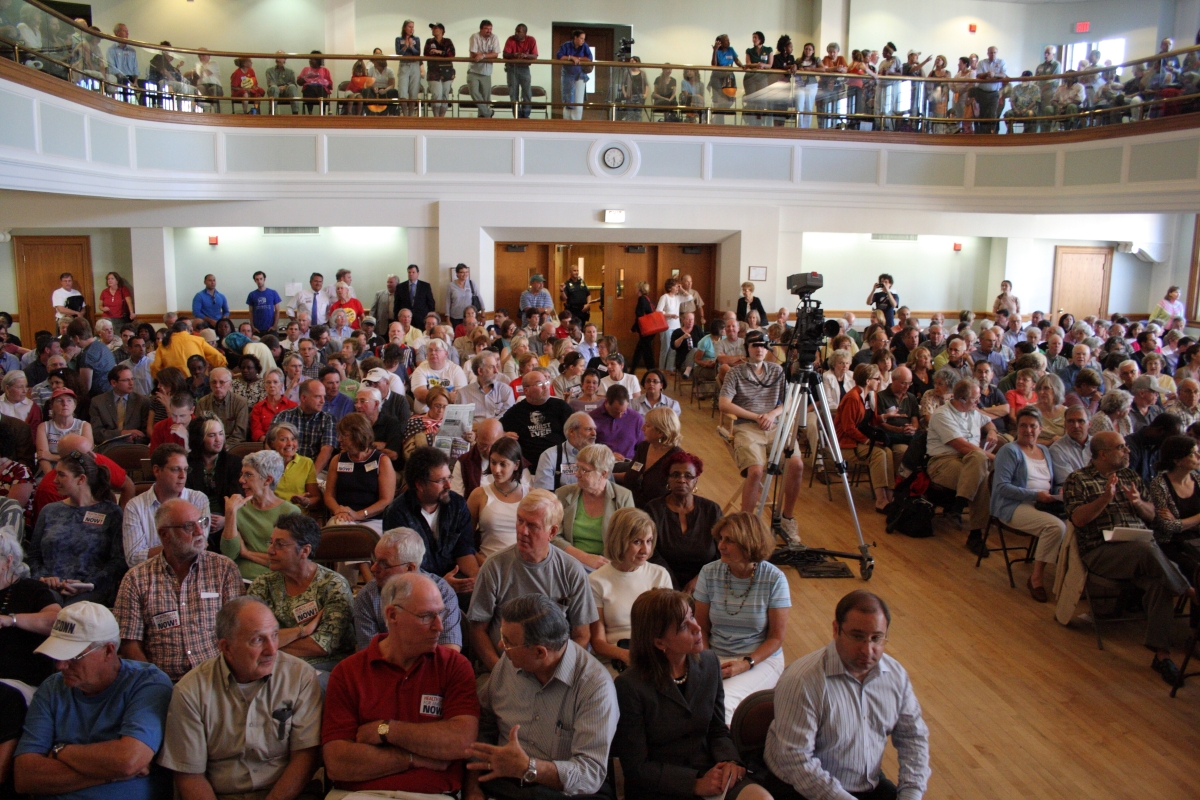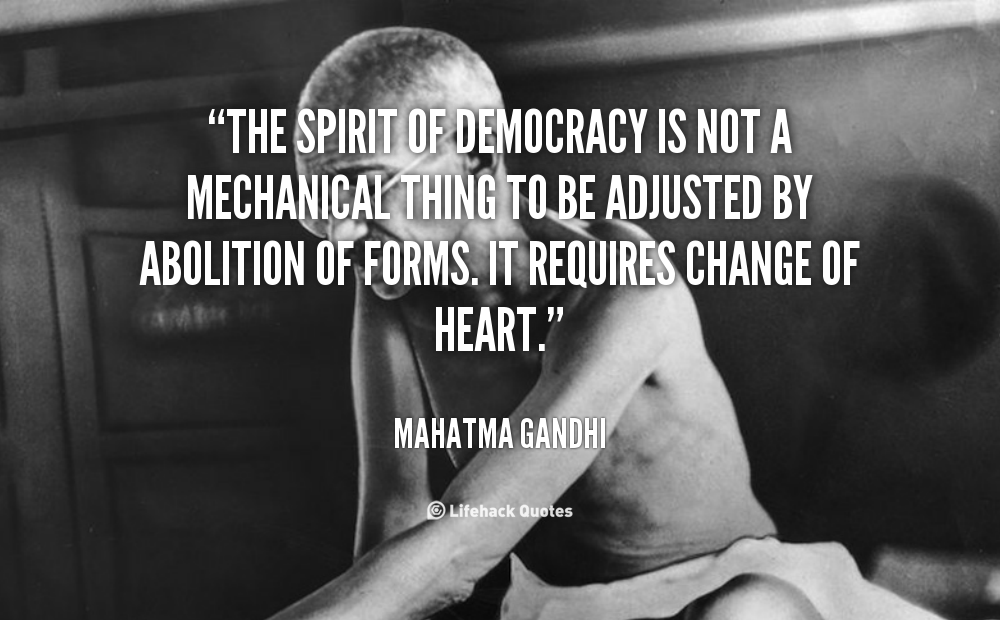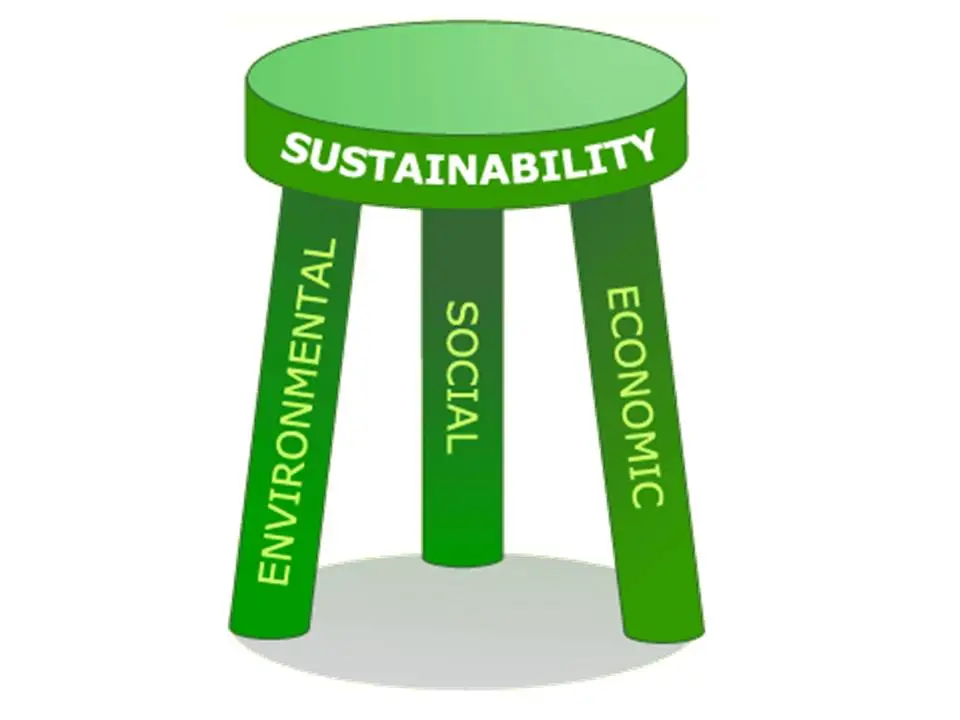In my last post, I built the first portion of the community economic development-opportunity-social sustainability model and explaining the relationship between the first two. Now, it’s time to take it one step further and see how the model rounds out and comes full circle.
Opportunity is at the center of the model, and we saw it is supported and enhanced through community economic development. How do opportunity and social sustainability relate, though?
Continue reading “Rounding out the Cycle: Completing the CED-SS Model”

